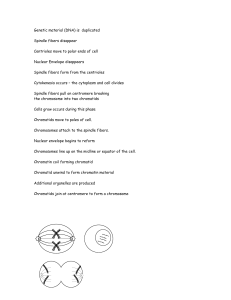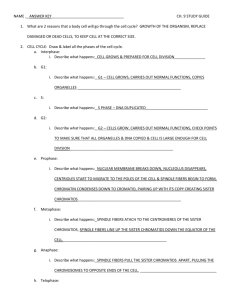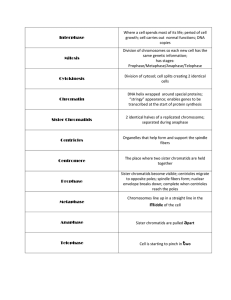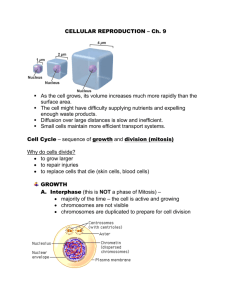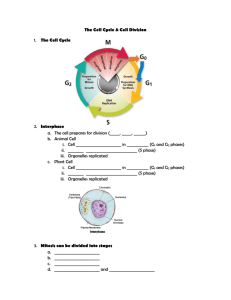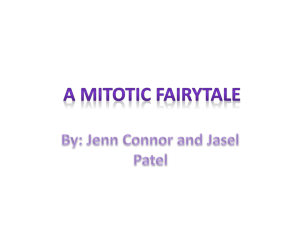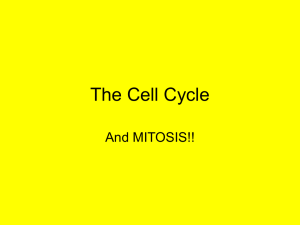79099_Mitosis
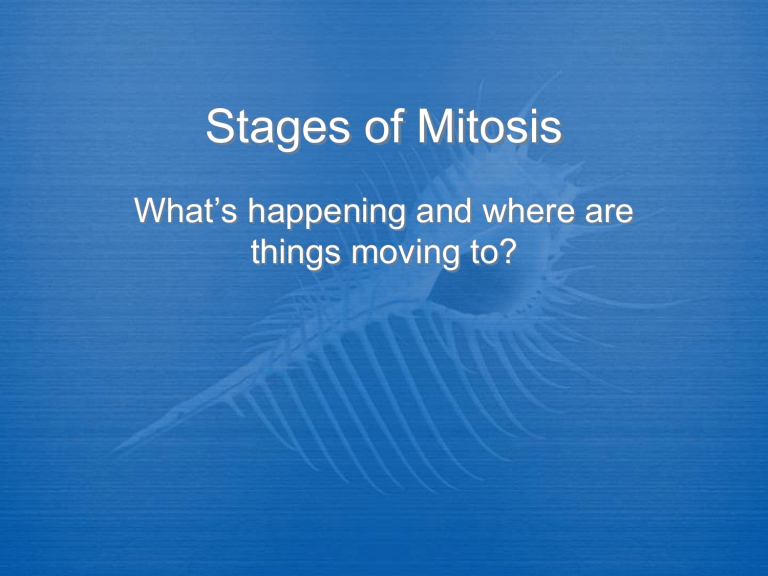
Stages of Mitosis
What’s happening and where are things moving to?
Interphase
Represents the longest time period of the cell cycle
Busiest phase of the cell cycle
G1: Cell grows in size and protein production is high
S: Cell copies it’s chromosomes
G2: After DNA is replicated organelles such as mitochondria are manufactured and cell parts needed for cell division are assembled.
Prophase -
Formation of sister chromatids
• Chromatin coils up and chromosomes become visible.
• Formation of sister chromatids held together by the centromere.
• Nucleus begins to disappear
• Nucleolus disintegrates.
• Centrioles begin to move to opposite ends of the cell. ( animal cells)
• Spindle begins to form - made from thin fibers of microtubules.
• In plant cells, spindle forms without centrioles.
Metaphase -
aligning into the middle
Shortest phase of mitosis
Double chromosomes ( sister chromatids ) become attached to spindle fibers by their centromeres.
Chromosomes pulled by spindle fibers to the middle of the cell.
Each sister chromatid is attached by it’s spindle fiber that extends to the oppoosite pole.
Anaphase -
Separation of sister chromatids
Centromeres split apart.
Chromatid pairs separate from each other.
Pulled apart by the shortening of the microtubules in the spindle fibers.
Telophase
Begins when chromatids reach the opposite poles.
Spindle breaks down
Nucleolus reappears
New nuclear envelope forms around each set of chromosomes.
Lastly, a new double membrane forms between two new nuclei. This is called cytokinesis.
Cytokinesis – cell division
Final stage of cell reproduction
Division of the cytoplasm into approximately equal halves, resulting in a roughly equal distribution of organelles in each of the daughter cells.
In cells lacking a cell wall occurs through a pinching inward
Organisms with a cell wall undergo a process through which a so-called cell plate is built from the middle of the cell outward to the membrane.
